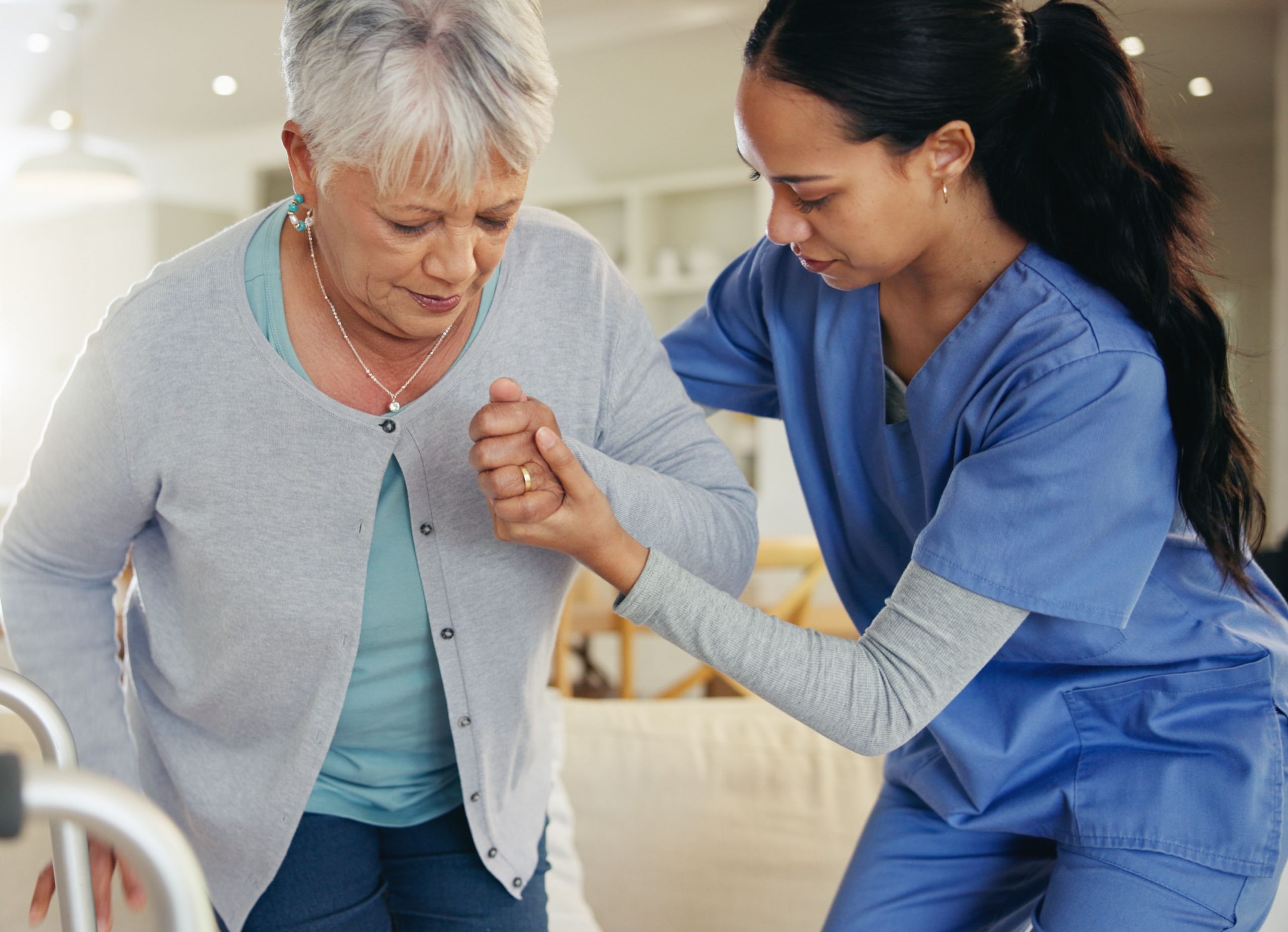
According to the Centers for Disease Control and Prevention (CDC), millions of people ages 65 and older fall each year. However, many falls are preventable with awareness and the proper fall safety measures. In this guide, we will explore the common causes of falls, ways to mitigate fall hazards in your home, and essential tips for getting up safely after a fall.
Common Causes & Risk Factors of Falls
Falls can happen for many reasons, and understanding the common causes and risk factors is important for proper fall prevention. Several common factors include:
- Age-related declines in balance
- Muscle weakness and mobility issues
- Side effects of medications
- Low blood pressure
- Sensory deficits, such as impaired vision or hearing
- Home hazards, including cluttered walkways or poor lighting
By addressing these common causes and risk factors of falls, you can take proactive steps to reduce your risk of falling while maintaining safety and independence.
Enhancing Home Safety to Prevent Falls
Creating a safe home environment is important to reduce the risk of falls, particularly for older or elderly adults who spend a significant amount of time at home. By addressing these potential safety hazards, you can significantly lower your risk of falling. Here are some effective ways to enhance your home’s safety:
- Improve lighting with light-sensitive night lights or motion-detecting lights that turn on automatically.
- Fix or replace worn flooring including carpeting or floor tiles. Secure rugs with tape or no-slip rug pads to reduce the risk of tripping.
- Rearrange furniture & clutter to ensure walking areas are free of obstacles.
- Remove electrical cords from walkways and under rugs.
- Restrict pets to certain areas if balance is an issue. Make sure pet food and water dishes are not placed in walkways.
Be Aware of Medication Side Effects
Although medications are supposed to help your health, some have side effects that can put you at risk of falling. It is a good idea to consult a pharmacist or a doctor about ALL the medications you take — including over-the-counter medications and herbal supplements. Be alert of side effects such as dizziness and balance problems, fatigue, confusion, loss of coordination and weakness that can be risk factors of falling.
How to Get Up from a Fall
Getting up quickly or the wrong way could make an injury worse. If you are hurt, call for help using a medical alert response service or your telephone. If you are not injured, follow these steps to safely rise from a fall.
Prepare
- Take a moment to gather yourself and make sure you are uninjured before attempting to get up from a fall.
- Look around for a sturdy piece of furniture or the bottom of a staircase. Don’t try to stand up on your own.
- Roll over onto your side by turning your head in the direction you are trying to roll, then moving your shoulders, arms, hips, and finally your leg, over.
Rise
- Push your upper body up. Lift your head and pause for a few moments to steady yourself.
- Slowly get up on your hands and knees and crawl to a sturdy piece of furniture or the bottom of a staircase.
- Place your hands on the furniture or stairs for balance and slide your foot forward so it is flat on the floor.
Sit
- Prepare to rise by planting your back foot on the floor.
- From this half-kneeling position, slowly rise and turn your body to sit in the chair.
- Sit for a few minutes before you try to do anything else.
How Home Health Can Help with Fall Prevention
Home health services can play a vital role in managing fall prevention, especially for individuals with conditions that frequently cause falls. Residential Healthcare Group’s StepWise Fall Prevention Program is designed to enhance patient independence and safety by improving mobility, balance, and strength, thereby reducing the risk of life-changing falls. This comprehensive program includes an evaluation of fall risks in the home, exercises to improve mobility, balance, and strength, education for both patients and caregivers, and preparation for maintaining independence and safety both inside and outside the home.


